Real Time-Based under Frequency Control and Energy Management of Microgrids
Abstract
1. Introduction
- The coordination and power management between DERs during grid-connected and island modes is addressed.
- During intentional islanding or fault, with insufficient DER power, an automatic under frequency load shedding is activated to disconnect the non-critical loads until the system frequency is restored.
- The transient and load shedding operation under highly unbalanced loads connected to the microgrid is also investigated.
- In island mode of operation, the DERs supply the loads and a controller is proposed and implemented for the diesel generator to control the frequency in isochronous mode, by maintaining a constant speed regardless of the load.
2. System Configuration
3. Proposed Control Scheme
3.1. Diesel Generator Model and Control
3.2. Doubly Fed Induction Generator (DFIG) Model and Control
3.2.1. Grid Side Converter (GSC) Control
3.2.2. Rotor Side Converter (RSC) Control
3.3. Load Shedding Scheme
4. Results and Discussion
- (A)
- Grid-connected to islanded mode switching
- (B)
- Load shedding control during fault in islanded mode
4.1. Grid-Connected to Islanded Mode Switching
4.2. Load Shedding Control during Fault in Islanded Mode
5. Conclusions
Author Contributions
Funding
Conflicts of Interest
References
- Parhizi, S.; Lotfi, H.; Khodaei, A.; Bahramirad, S. State of the Art in Research on Microgrids: A Review. IEEE Access 2015, 3, 1. [Google Scholar] [CrossRef]
- Planas, E.; Andreu, J.; Gárate, J.I.; De Alegría, I.M.; Ibarra, E. AC and DC technology in microgrids: A review. Renew. Sustain. Energy Rev. 2015, 43, 726–749. [Google Scholar] [CrossRef]
- Sahoo, S.K.; Kishore, N.K.; Sinha, A.K. Control Techniques in AC, DC, and Hybrid AC–DC Microgrid: A Review. IEEE J. Emerg. Sel. Top. Power Electron. 2017, 6, 738–759. [Google Scholar] [CrossRef]
- Radwan, A.A.A.; Mohamed, Y.A.-R.I. Networked Control and Power Management of AC/DC Hybrid Microgrids. IEEE Syst. J. 2014, 11, 1662–1673. [Google Scholar] [CrossRef]
- Che, L.; Shahidehpour, M.; AlAbdulwahab, A.; Al-Turki, Y. Hierarchical Coordination of a Community Microgrid with AC and DC Microgrids. IEEE Trans. Smart Grid 2015, 6, 3042–3051. [Google Scholar] [CrossRef]
- Xia, Y.; Wei, W.; Yu, M.; Wang, X.; Peng, Y. Power Management for a Hybrid AC/DC Microgrid with Multiple Sub-grids. IEEE Trans. Power Electron. 2018, 33, 3520–3533. [Google Scholar] [CrossRef]
- Institute of Electrical and Electronics Engineers (IEEE). IEEE Guide for Design, Operation, and Integration of Distributed Resource Island Systems with Electric Power Systems. In IEEE STD 1547.4-2011; Institute of Electrical and Electronics Engineers (IEEE): Piscataway, NJ, USA, 2011. [Google Scholar]
- Kaur, A.; Kaushal, J.; Basak, P. A review on microgrid central controller. Renew. Sustain. Energy Rev. 2016, 55, 338–345. [Google Scholar] [CrossRef]
- Bajwa, A.A.; Mokhlis, H.; Mekhilef, S.; Mubin, M. Enhancing power system resilience leveraging microgrids: A review. J. Renew. Sustain. Energy 2019, 11, 035503. [Google Scholar] [CrossRef]
- Zhuo, W.; Savkin, A.V.; Meng, K. Decentralized Optimal Control of a Microgrid with Solar PV, BESS and Thermostatically Controlled Loads. Energies 2019, 12, 2111. [Google Scholar] [CrossRef]
- Schütz, T.; Hu, X.; Fuchs, M.; Muller, D. Optimal design of decentralized energy conversion systems for smart microgrids using decomposition methods. Energy 2018, 156, 250–263. [Google Scholar]
- Worku, M.Y.; Hassan, M.A.M.; Abido, M.A. Real Time Energy Management and Control of Renewable Energy based Microgrid in Grid Connected and Island Modes. Energies 2019, 12, 276. [Google Scholar] [CrossRef]
- Zheng, Y.; Li, S.; Tan, R. Distributed Model Predictive Control for On-Connected Microgrid Power Management. IEEE Trans. Control Syst. Technol. 2018, 26, 1028–1039. [Google Scholar] [CrossRef]
- Peyghami-Akhuleh, S.; Mokhtari, H.; Blaabjerg, F. Autonomous Power Management in LVDC Microgrids Based on a Superimposed Frequency Droop. IEEE Trans. Power Electron. 2017, 33, 5341–5350. [Google Scholar] [CrossRef]
- Hassan, M.A.M.; Worku, M.Y.; Abido, M.A. Optimal Design and Real Time Implementation of Autonomous Microgrid Including Active Load. Energies 2018, 11, 1109. [Google Scholar] [CrossRef]
- Lidula, A.N.W.; Rajapakse, A. Microgrids research: A review of experimental microgrids and test systems. Renew. Sustain. Energy Rev. 2011, 15, 186–202. [Google Scholar] [CrossRef]
- Mohammadi, J.; Ajaei, F.B. Adaptive Voltage-Based Load Shedding Scheme for the DC Microgrid. IEEE Access 2019, 7, 106002–106010. [Google Scholar] [CrossRef]
- Mahat, P.; Chen, Z.; Bak-Jensen, B. Under frequency load shedding for an islanded distribution system with distributed generators. IEEE Trans. Power Del. 2010, 25, 911–918. [Google Scholar] [CrossRef]
- Reddy, S.S. Multi-objective based congestion management using generation rescheduling and load shedding. IEEE Trans. Power Syst. 2017, 32, 852–863. [Google Scholar]
- Shekari, T.; Aminifar, F.; Sanaye-Pasand, M. An Analytical Adaptive Load Shedding Scheme Against Severe Combinational Disturbances. IEEE Trans. Power Syst. 2015, 31, 4135–4143. [Google Scholar] [CrossRef]
- Tang, L.; McCalley, J. Two-Stage Load Control for Severe Under-Frequency Conditions. IEEE Trans. Power Syst. 2015, 31, 1943–1953. [Google Scholar] [CrossRef]
- Wu, J.; Wei, Z.; Li, W.; Wang, Y.; Li, Y.; Sauer, D. Battery Thermal- and Health-Constrained Energy Management for Hybrid Electric Bus based on Soft Actor-Critic DRL Algorithm. IEEE Trans. Ind. Inform. 2020. [Google Scholar] [CrossRef]
- Wei, Z.; Zhao, D.; He, H.; Cao, W.; Dong, G. A noise-tolerant model parameterization method for lithium-ion battery management system. Appl. Energy 2020, 268, 114932. [Google Scholar] [CrossRef]
- Reddy, S.S.; Sandeep, V.; Jung, C.-M. Review of stochastic optimization methods for smart grid. Front. Energy 2017, 11, 197–209. [Google Scholar] [CrossRef]
- Reddy, S.S. Optimal power flow with renewable energy resources including storage. Electr. Eng. 2017, 99, 685–695. [Google Scholar] [CrossRef]
- Zhou, Q.; Li, Z.; Wu, Q.; Shahidehpour, M. Two-Stage Load Shedding for Secondary Control in Hierarchical Operation of Islanded Microgrids. IEEE Trans. Smart Grid 2018, 10, 3103–3111. [Google Scholar] [CrossRef]
- Karimi, M.; Wall, P.; Mokhlis, H.; Terzija, V. A New Centralized Adaptive Underfrequency Load Shedding Controller for Microgrids Based on a Distribution State Estimator. IEEE Trans. Power Deliv. 2017, 32, 370–380. [Google Scholar]
- Rahmani, S.; Rezaei-Zare, A.; Rezaei-Zare, M.; Hooshyar, A. Voltage and Frequency Recovery in an Islanded Inverter-Based Microgrid Considering Load Type and Power Factor. IEEE Trans. Smart Grid 2019, 10, 6237–6247. [Google Scholar] [CrossRef]
- De Nascimento, B.N.; de Souza, A.C.Z.; de Carvalho Costa, J.G.; Castilla, M. Load shedding scheme with under-frequency and under voltage corrective actions to supply high priority loads in islanded microgrids. IET Renew. Power Gener. 2019, 13, 1981–1989. [Google Scholar] [CrossRef]
- Nourollah, S.; Gharehpetian, G.B. Coordinated Load Shedding Strategy to Restore Voltage and Frequency of Microgrid to Secure Region. IEEE Trans. Smart Grid 2019, 10, 4360–4368. [Google Scholar] [CrossRef]
- CIGRE C6.04.02 Task Force, Benchmark Modeling and Simulation for Analysis, Design, and Validation of Distributed Energy Systems. September 2006. Available online: https://www.yumpu.com/en/document/read/4578628/cigre-task-force-c60402-developing-benchmark-models-for- (accessed on 31 January 2019).
- Worku, M.Y. Power Smoothing Control of PMSG Based Wind Generation Using Supercapacitor Energy Storage System. Int. J. Emerg. Electr. Power Syst. 2017, 18. [Google Scholar] [CrossRef]
- Worku, M.Y.; Abido, M.A. Maximum Power Control of DFIG Based Grid Connected Wind Turbine Generator System. In Proceedings of the International Conference on Renewable Energies and Power Quality (ICREPQ’18), Salamanca, Spain, 21–23 March 2018, ISSN 2172-038X. [Google Scholar]
- Gao, H.; Xu, Y.; Liu, C.-C.; Chen, Y. Dynamic load shedding for an islanded microgrid with limited generation resources. IET Gener. Transm. Distrib. 2016, 10, 2953–2961. [Google Scholar] [CrossRef]
- Zin, A.A.M.; Hafiz, H.M.; Wong, W. Static and dynamic under-frequency load shedding: A comparison. In Proceedings of the International Conference on Power System Technology, Singapore, 21–24 November 2004; Volume 1, pp. 941–945. [Google Scholar]

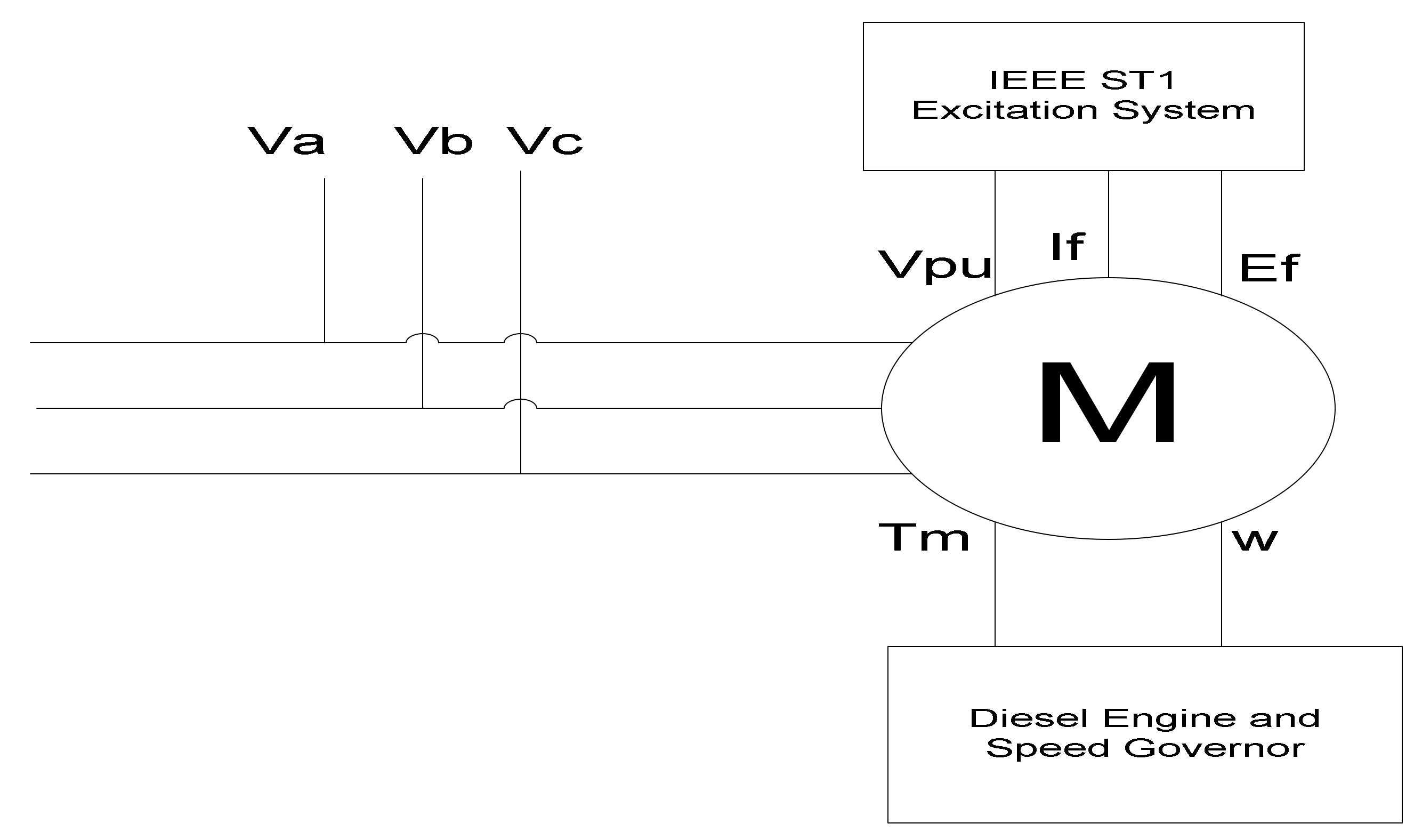

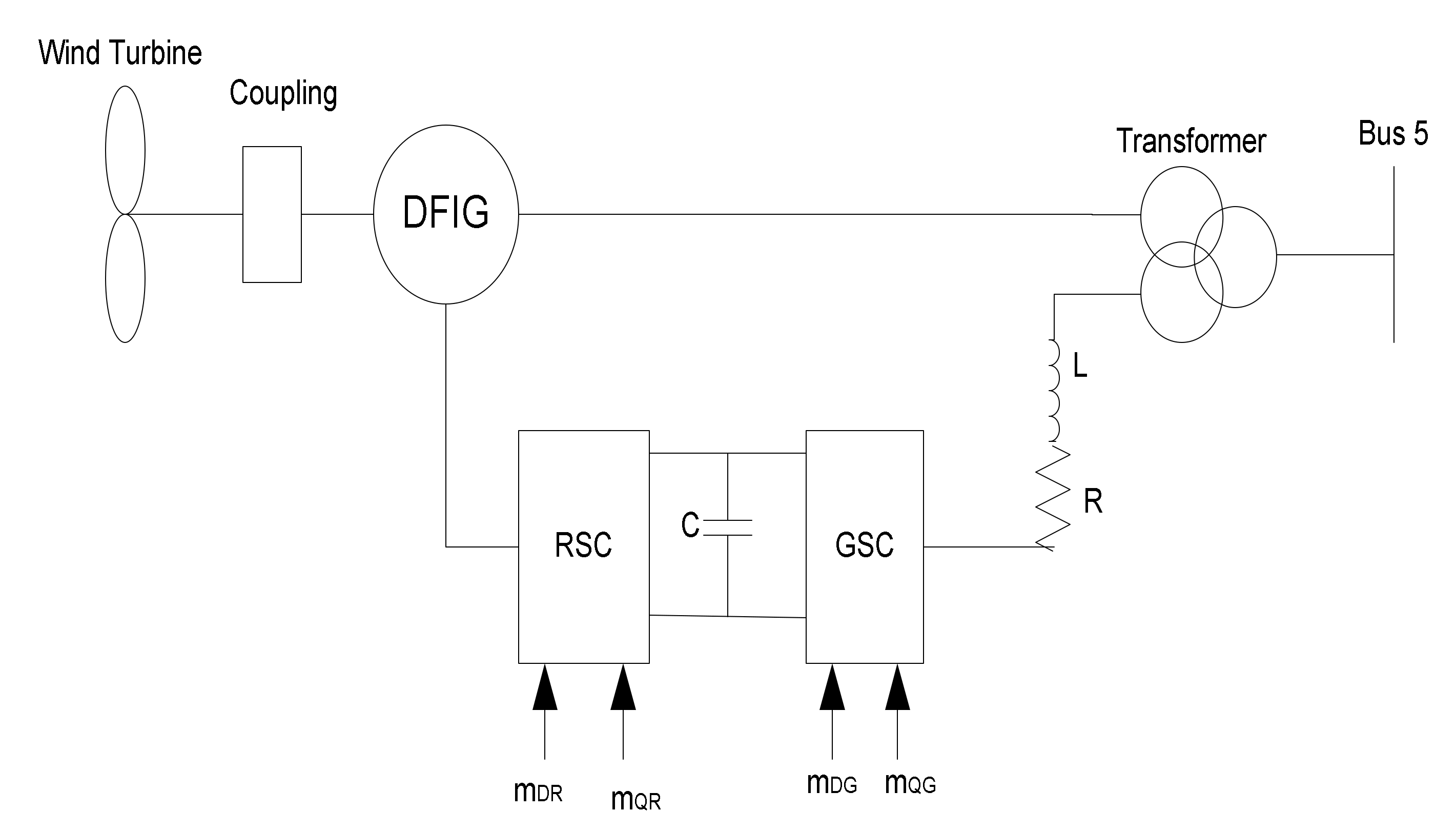

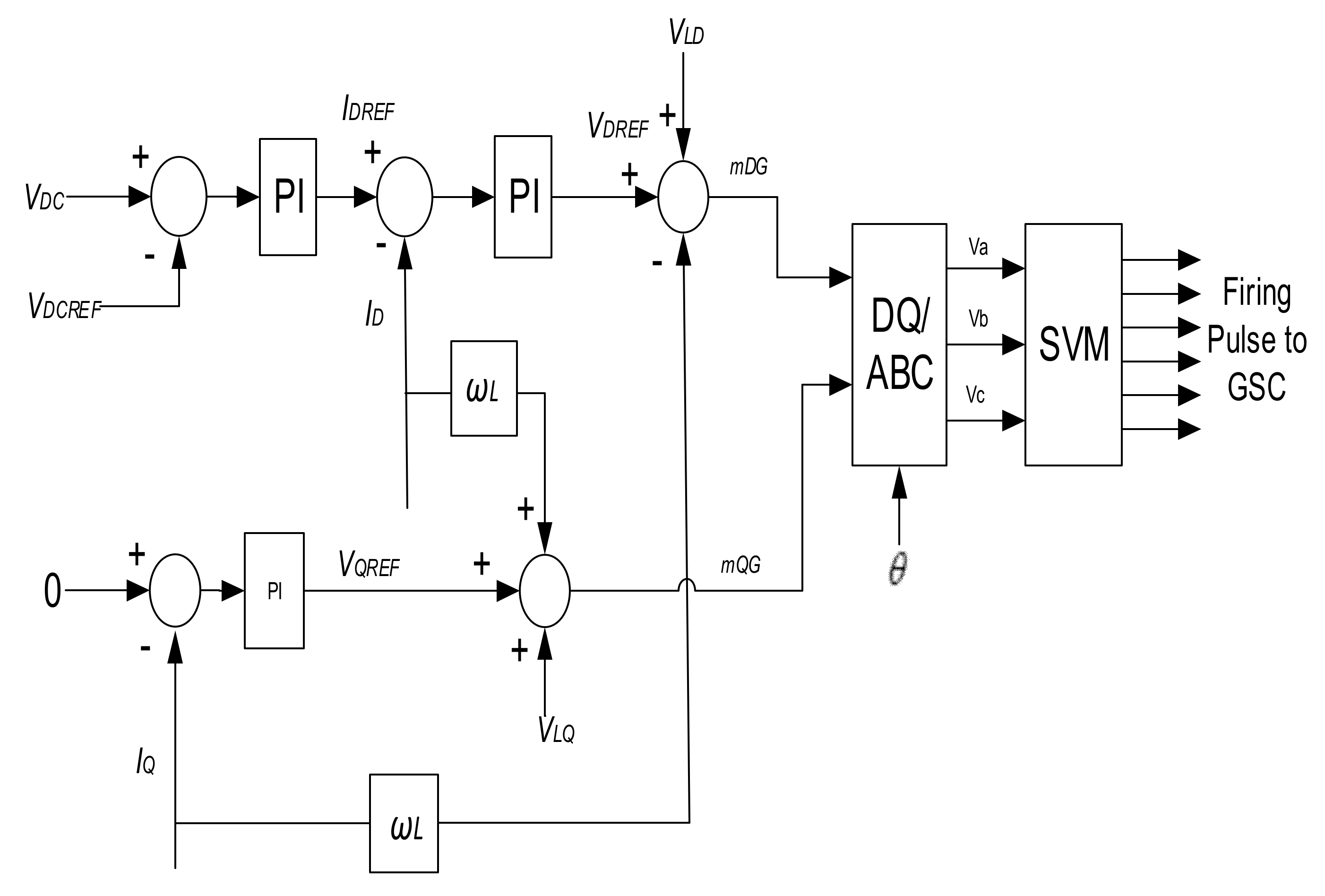


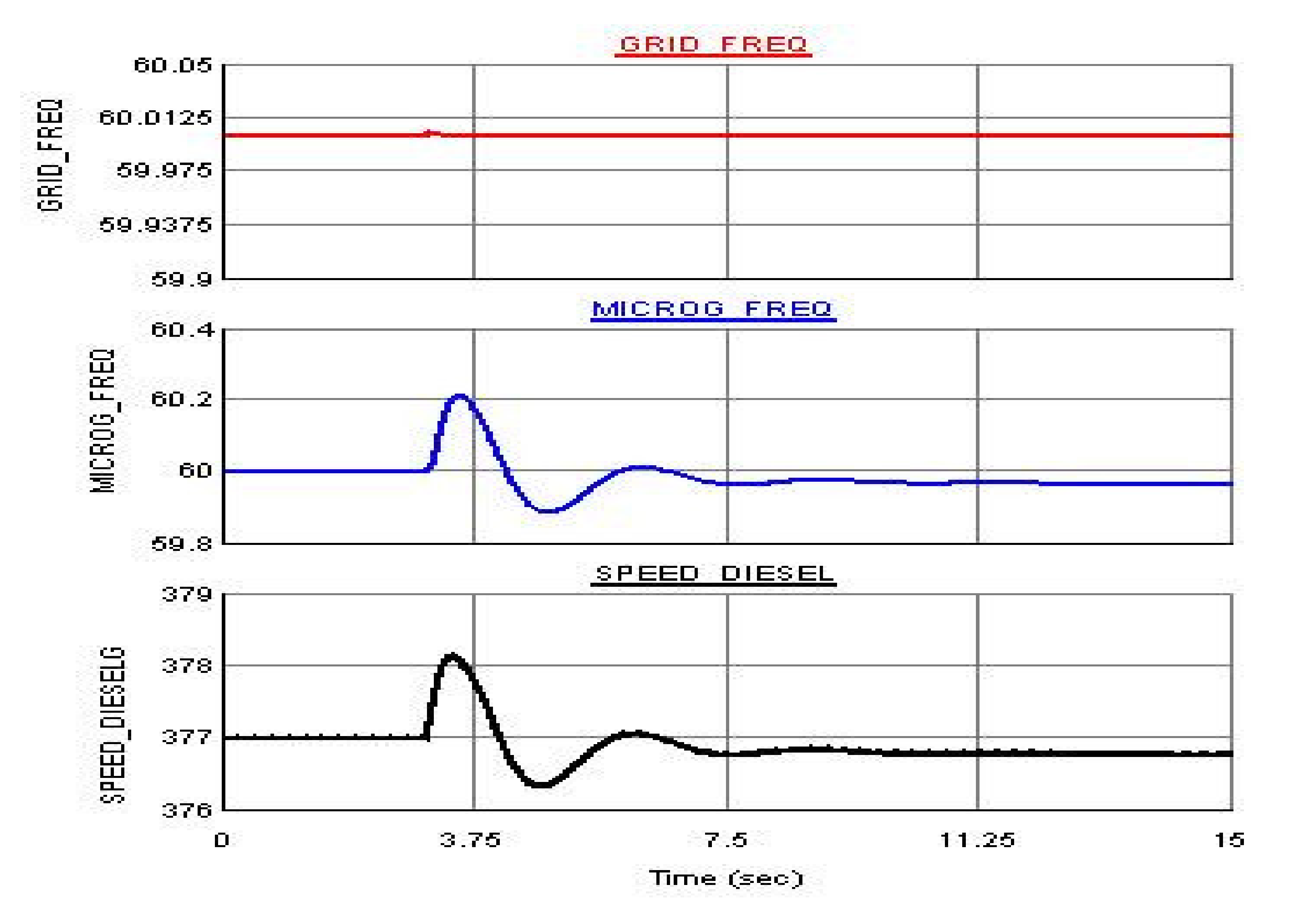
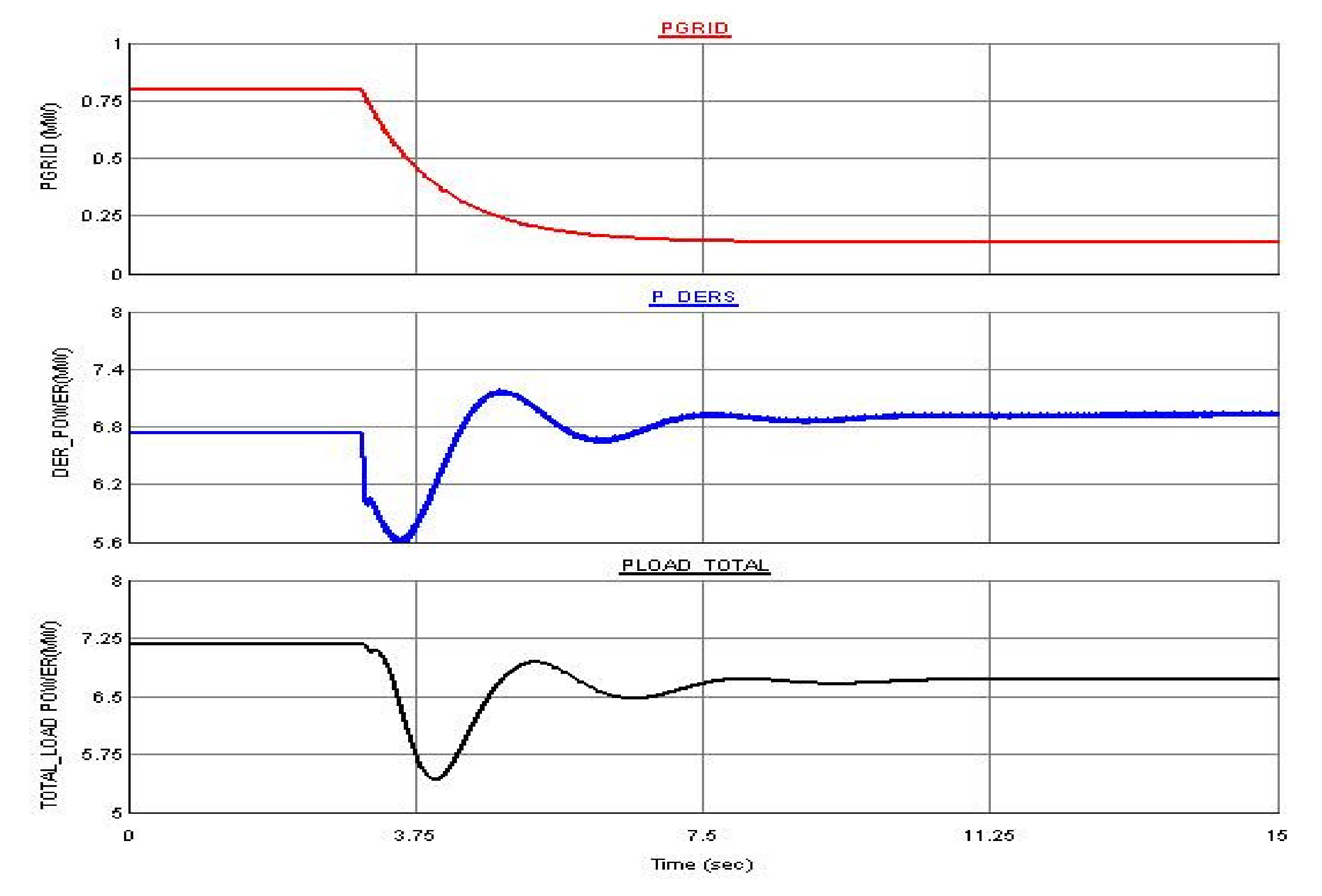

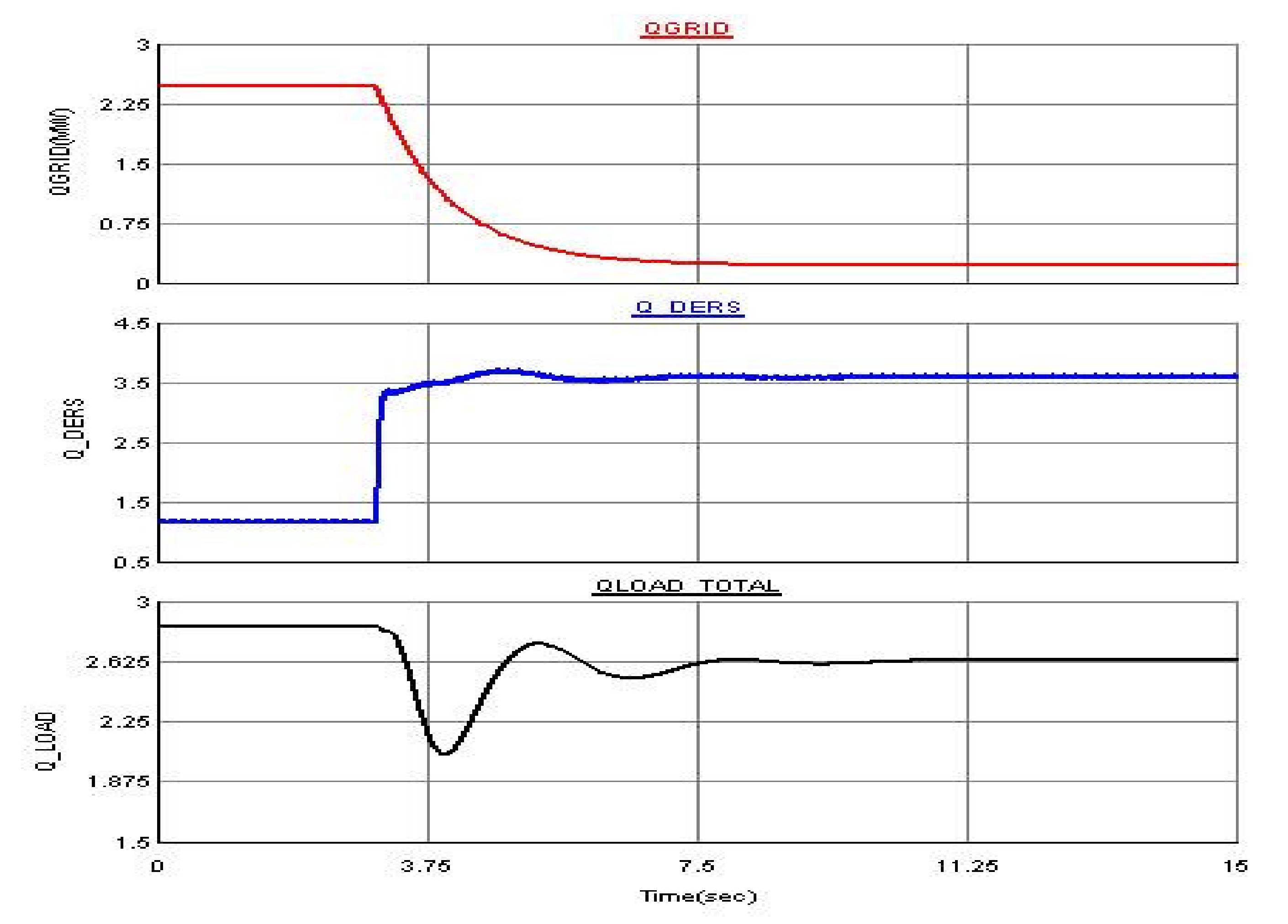

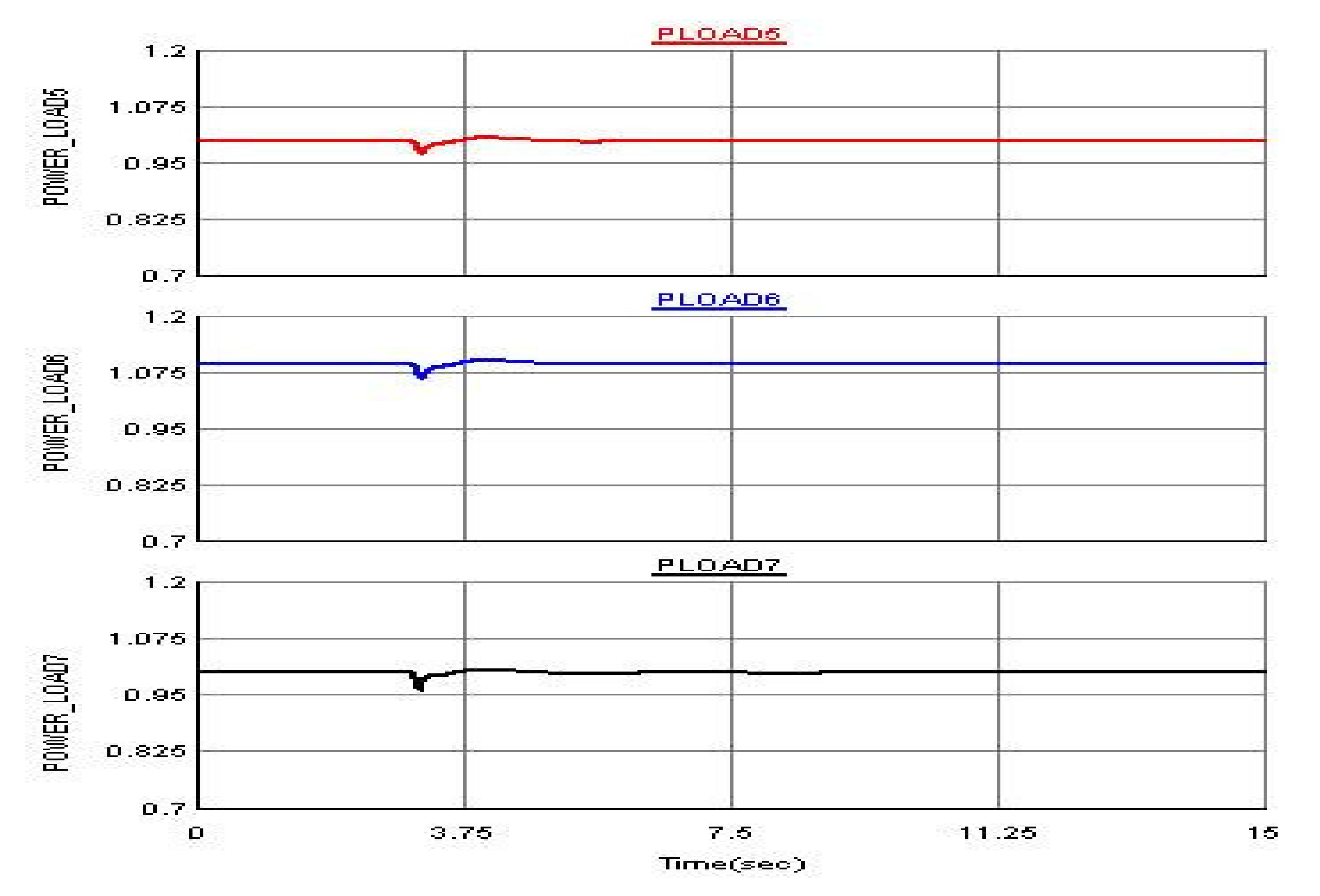
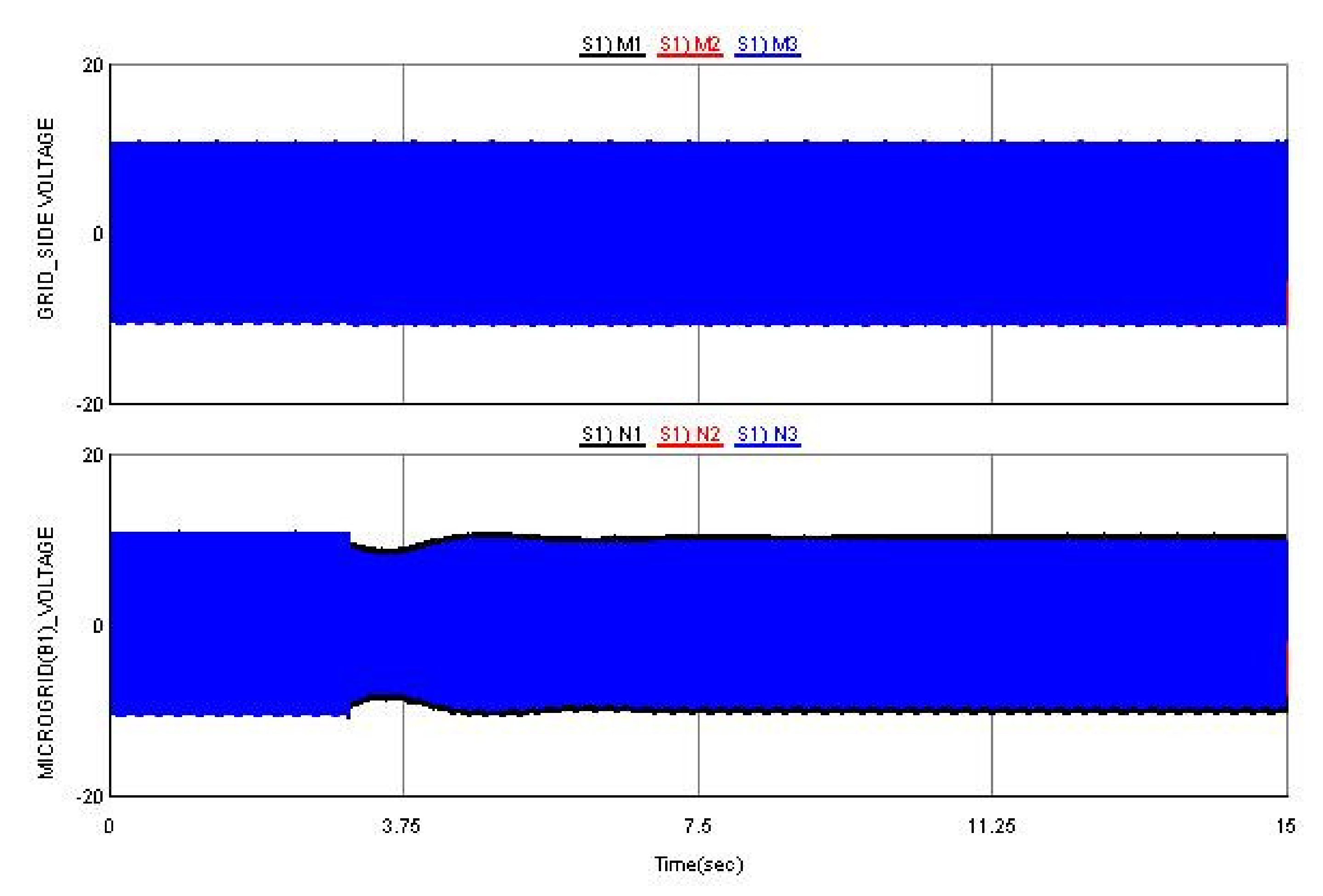
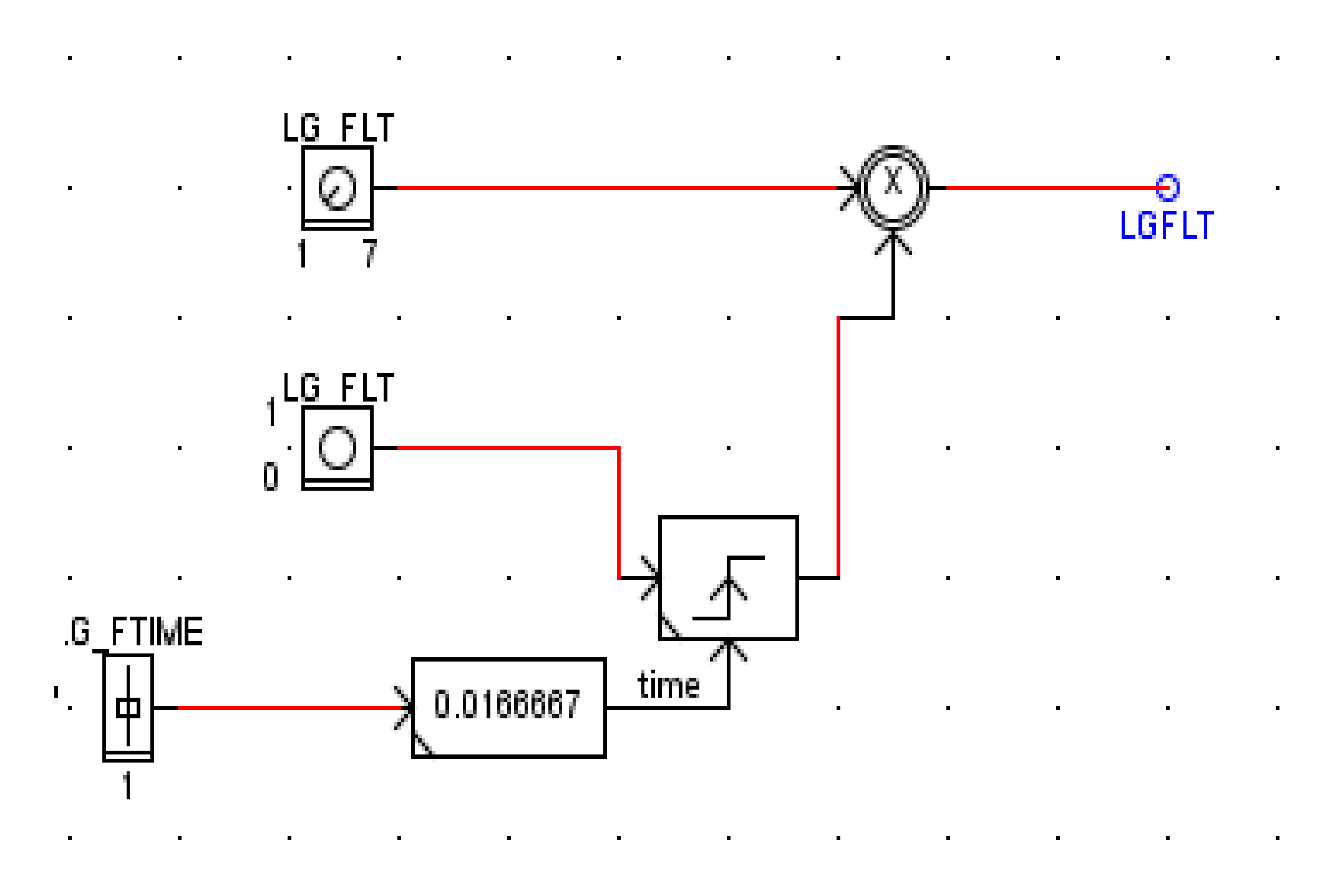
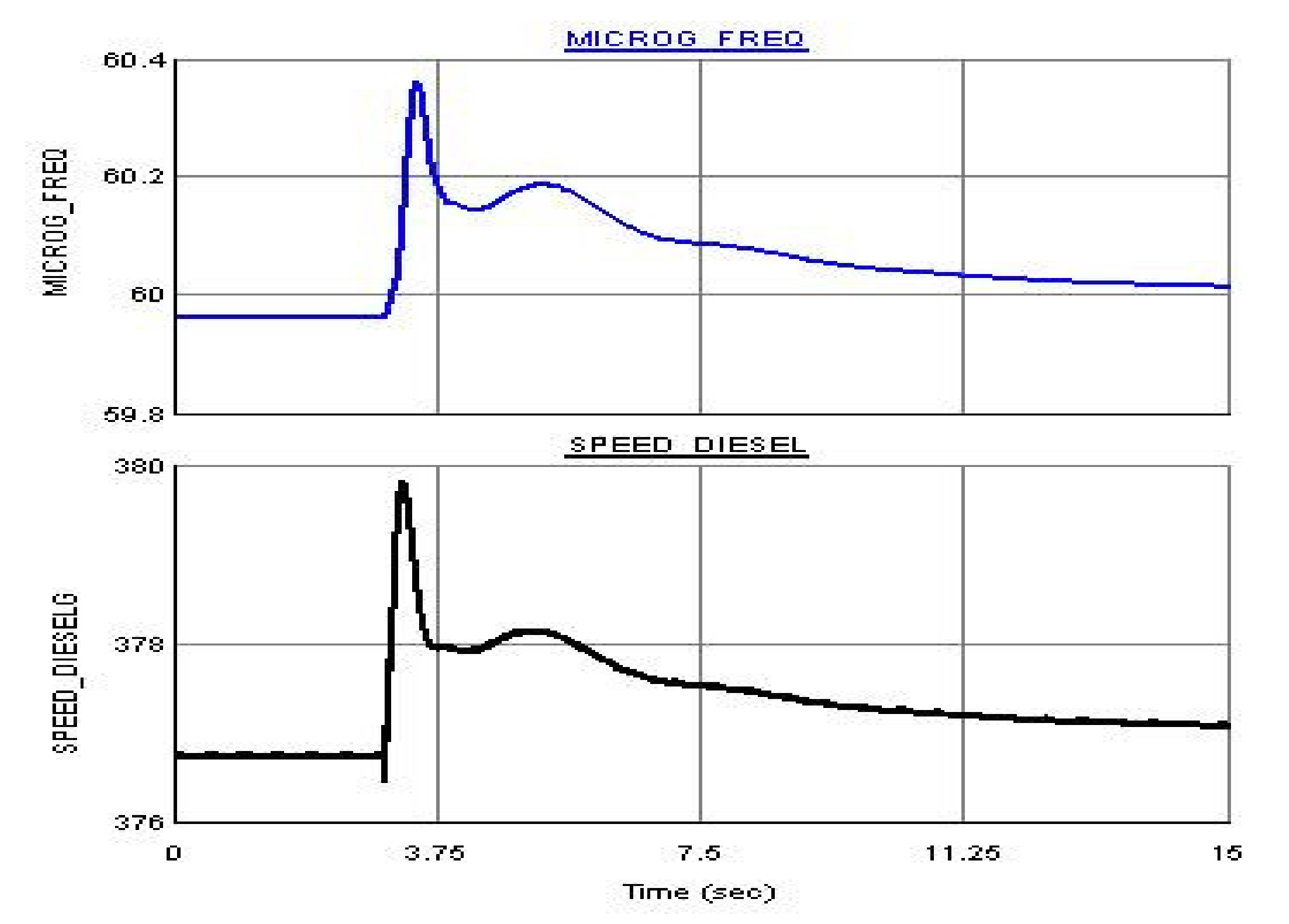
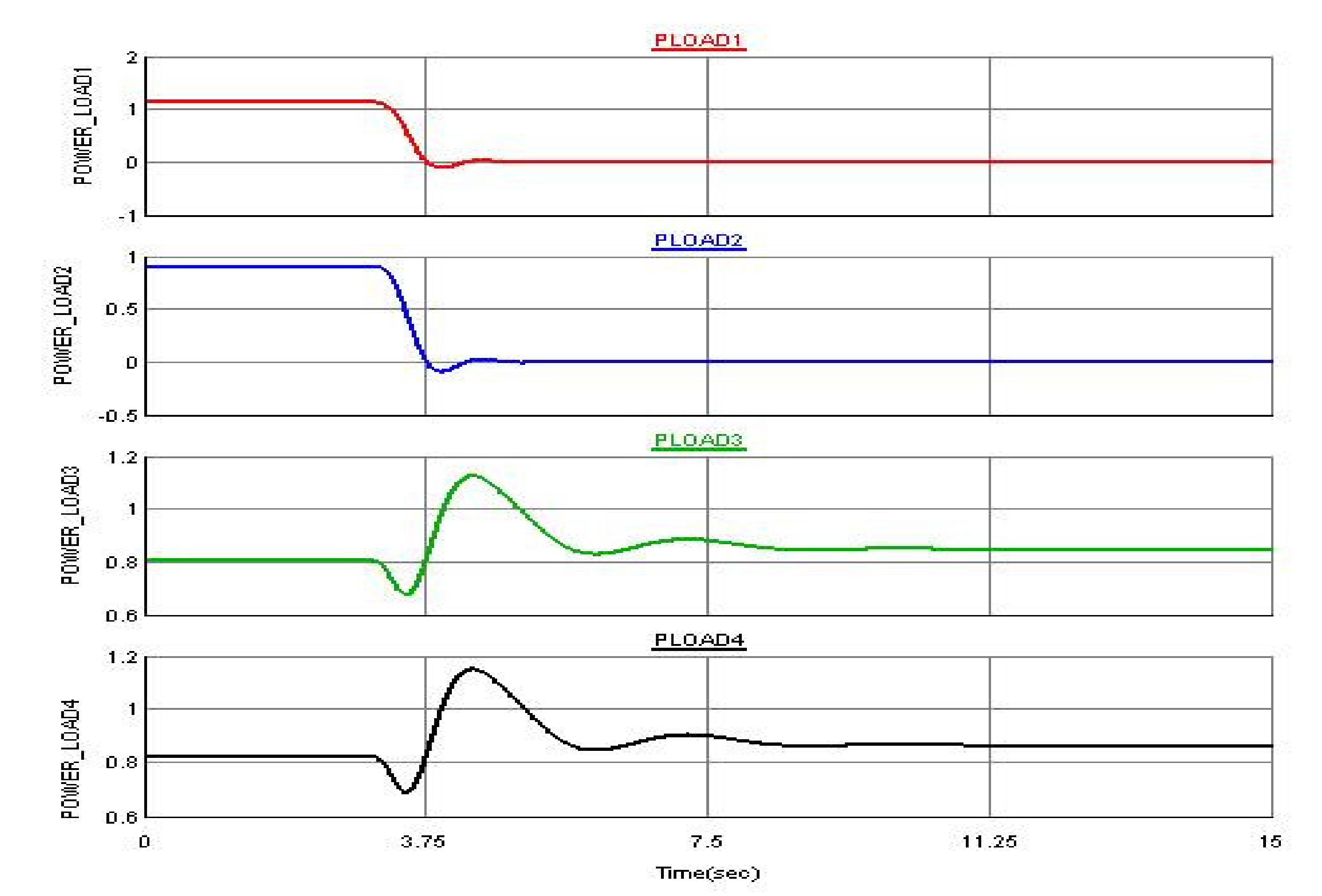
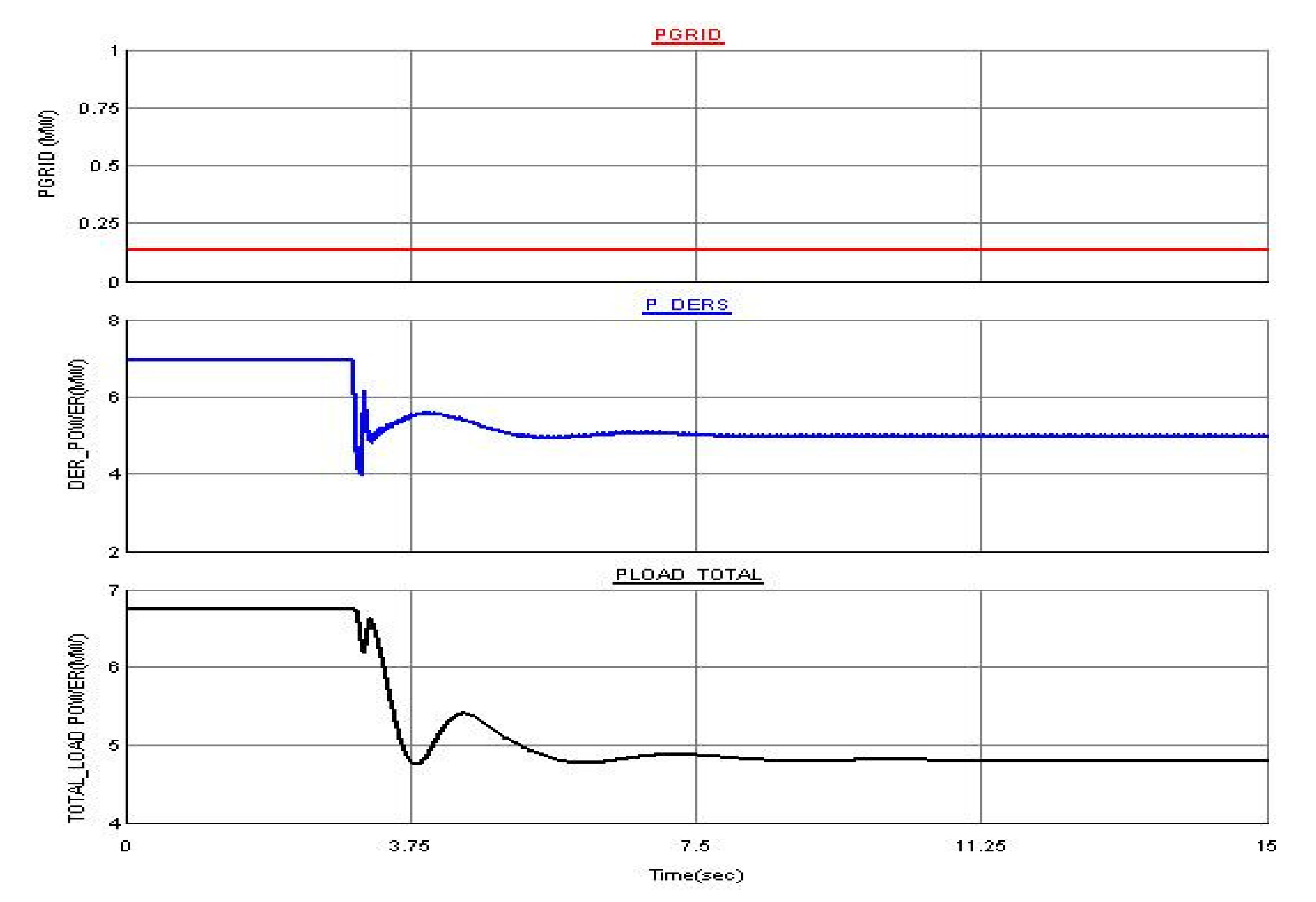



| Bus | MVA | pf | P (MW) | Q (Mvar) |
|---|---|---|---|---|
| 1 (Load 1) | 1.518 | 0.9 | 1.37 | 0.66 |
| 2 (Load 2) | 1.1 | 0.95 | 1.045 | 0.343 |
| 3 (Load 3) | 1.032 | 0.9 | 0.93 | 0.45 |
| 4 (Load 4) | 1.068 | 0.9 | 0.96 | 0.47 |
| Bus | Phase A (KVA) | Phase B (KVA) | Phase C (KVA) | pf |
|---|---|---|---|---|
| 5 (Load 5) | 325 | 625 | 100 | 0.95 |
| 6 (Load 6) | 125 | 725 | 300 | 0.95 |
| 7 (Load 7) | 275 | 625 | 150 | 0.95 |
| Stages (Priority) | Criteria | Time(s) | Load |
|---|---|---|---|
| 1 | 0.1 | Load 1 | |
| 2 | 0.08 | Load 2 | |
| 3 | 0.08 | Load 3 | |
| 4 | 0.08 | Load 4 |
© 2020 by the authors. Licensee MDPI, Basel, Switzerland. This article is an open access article distributed under the terms and conditions of the Creative Commons Attribution (CC BY) license (http://creativecommons.org/licenses/by/4.0/).
Share and Cite
Worku, M.Y.; Hassan, M.A.; Abido, M.A. Real Time-Based under Frequency Control and Energy Management of Microgrids. Electronics 2020, 9, 1487. https://doi.org/10.3390/electronics9091487
Worku MY, Hassan MA, Abido MA. Real Time-Based under Frequency Control and Energy Management of Microgrids. Electronics. 2020; 9(9):1487. https://doi.org/10.3390/electronics9091487
Chicago/Turabian StyleWorku, Muhammed Y., Mohamed A. Hassan, and Mohamed A. Abido. 2020. "Real Time-Based under Frequency Control and Energy Management of Microgrids" Electronics 9, no. 9: 1487. https://doi.org/10.3390/electronics9091487
APA StyleWorku, M. Y., Hassan, M. A., & Abido, M. A. (2020). Real Time-Based under Frequency Control and Energy Management of Microgrids. Electronics, 9(9), 1487. https://doi.org/10.3390/electronics9091487






